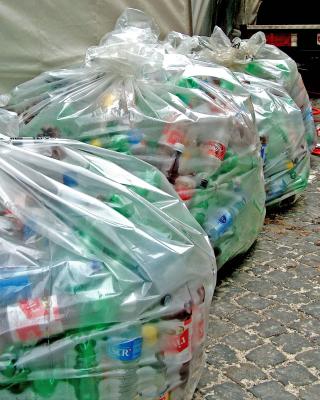EU 28+2 recycled 6.8m tonnes, 40.9%, of its 16.7m tonnes plastic packaging waste in 2016, easily surpassing the EU’s minimum target of 22.5%. This is a key result from the Conversio report commissioned by PlasticsEurope in alliance with EPRO.
Increasing plastic packaging recycling towards ambitions of the Plastic Strategy
According to EPRO the recycling rate for plastic packaging rose from 39.5% in 2014 to 40.9% in 2016. This shows that the national recycling schemes in Europe, based on extended producer responsibility (EPR), manage well, EPRO says. Each country has normally, either by law or a covenant, fixed national targets for recycling and energy recovery. These regulations are based on the EU directive on Packaging and Packaging Waste (94/62/EU).
All the EU 28+ 2 countries in 2016 exceeded the EU minimum targets of 22.5% recycling. 26 countries (24 in 2014) recycled more than 30%, 15 countries even surpassed 40%. In 2014, Czechia ranked on the top with a recycling rate of 51.2% followed by Germany, Netherlands, Sweden, Ireland and Spain.
Stuart Foster, RECOUP CEO and EPRO Director said of the report ‘there is unparalleled interest and focus on plastic packaging resource management at the moment. These statistics are fundamental in understanding the current position across Europe and possible ways forwards around household, commercial and agricultural sector plastic packaging recycling.
Plastic packaging waste from households vs trade and industry
64% of the post-consumer plastic packaging waste is generated from households, the remaining 36%, comes from the trade/ industry segment. The recycling rate for trade and industry sector reached 46.5% (42.8% in 2014), while recycling for the household segment obtained 37.8% (37.7%).
The following EPRO countries include all kinds of plastic packaging in their collection schemes for households: Germany, Netherlands, Finland, Iceland, Italy, Norway, Portugal, Spain and Sweden, in a separate plastics fraction, together with other lightweight packaging (yellow bin) or sorted out at central sorting plants for residual waste.
In other countries like Austria and UK, some parts of the country collect all plastic packaging while other regions concentrate on just rigid plastic packaging, EPRO says. Germany, Netherlands, Finland, Iceland, Norway and Sweden have in addition a deposit system for most of the beverage bottles. In Belgium, France and Switzerland, the EPR- systems focus on rigid plastics (bottles), but France is about to expand, step by step, the scope of the system to comprise all plastic packaging. How to sort, recycle and recover mixed streams of plastic packaging is a key topic for EPRO working groups. In addition, design for recycling is also a key issue for EPRO and now also a key issue mentioned in the new EU Plastic strategy.
More energy recovery and less landfilling
According to EPRO energy recovery hit 38.8% in 2016 (38.5% in 2014). In total 79.7% (78.0%) of all plastic packaging waste was recovered in 2016, the balance going to landfills and incineration without energy recovery; 3.4m tonnes of plastic packaging ended in landfills last year.
There are still big differences on energy recovery results within Europe. Most countries in Northern parts of Europe recover 90-100% of all their plastic packaging waste, while some other countries still landfill most of their plastic packaging not sorted out for recycling.
Plastic waste in general
The recycling result for packaging of 40.9% is better than for other plastic applications. The overall recycling rate for plastics reached 31.1% in 2016. Packaging thus lift the average recycling rates for all plastics in Europe, EPRO says.
Canada
There are no national statistics on recycling of household plastic packaging because each Canadian province is responsible for mandating packaging and paper EPR programs. Accordingly, there is no standard method for measuring material recycling performance. However, the following ranges of recycling rates represent household plastic packaging recycled in Canada today:
• PET Bottles: 56% – 58%
• HDPE Bottles: 45% – 65%
• Plastic Film: 7% – 27%
• Other plastics: 22% – 37%
Please note that these ranges pertain to residential (household) packaging only. It does not include trade and industry sector generated material (aka industrial, commercial, and institutional (ICI)) material.
Statistics for PET bottles in South Africa, 2016
• In South Africa, the PET collection and recycling industry continues to exhibit sustained growth. According to PETCO, the Extended Producer Responsibility Organisation for the South African PET bottle sector, the total PET market in the country grew by 15% in 2016, from 210,000 tonnes to 241,000, with the beverage sector accounting for 68% of this market.
• For the second consecutive year, the collection rate for post-consumer PET bottles exceeded target, with more than 90,000 tonnes of post-consumer bottles recycled, equating to over 55% of the total PET bottle market or 2 bn bottles! The majority of these bottles were processed into polyester staple fibre or recycled into food and non-food grade recycled PET resin, fully closing the loop in bottle-grade recycling.
• Since its inception in 2004, the South African PET recycling sector has grown from recovering 9,800 tonnes (or 16%) of post-consumer PET bottles, to the 90,000 tonnes (54%) achieved in 2016. This growth in post-consumer recovery and recycling has resulted the creation of income opportunities an estimated 60,000* people. Formula based as collection is largely informal. South Africa has 54 million inhabitants.
Plastic waste from agriculture
Several EPRO members are also active within the agriculture sector, collecting and recovering agriculture film and other non- packaging plastics in addition to rigid plastic packaging waste from farmers. So far, there are no European statistics in this field, covering just agriculture plastics.
In 2011, EPRO established a working group focusing on collection and recovery of plastic waste from the agricultural sector. This expert group exchanges knowledge and best practice among EPRO members and is networking with other organisations.











